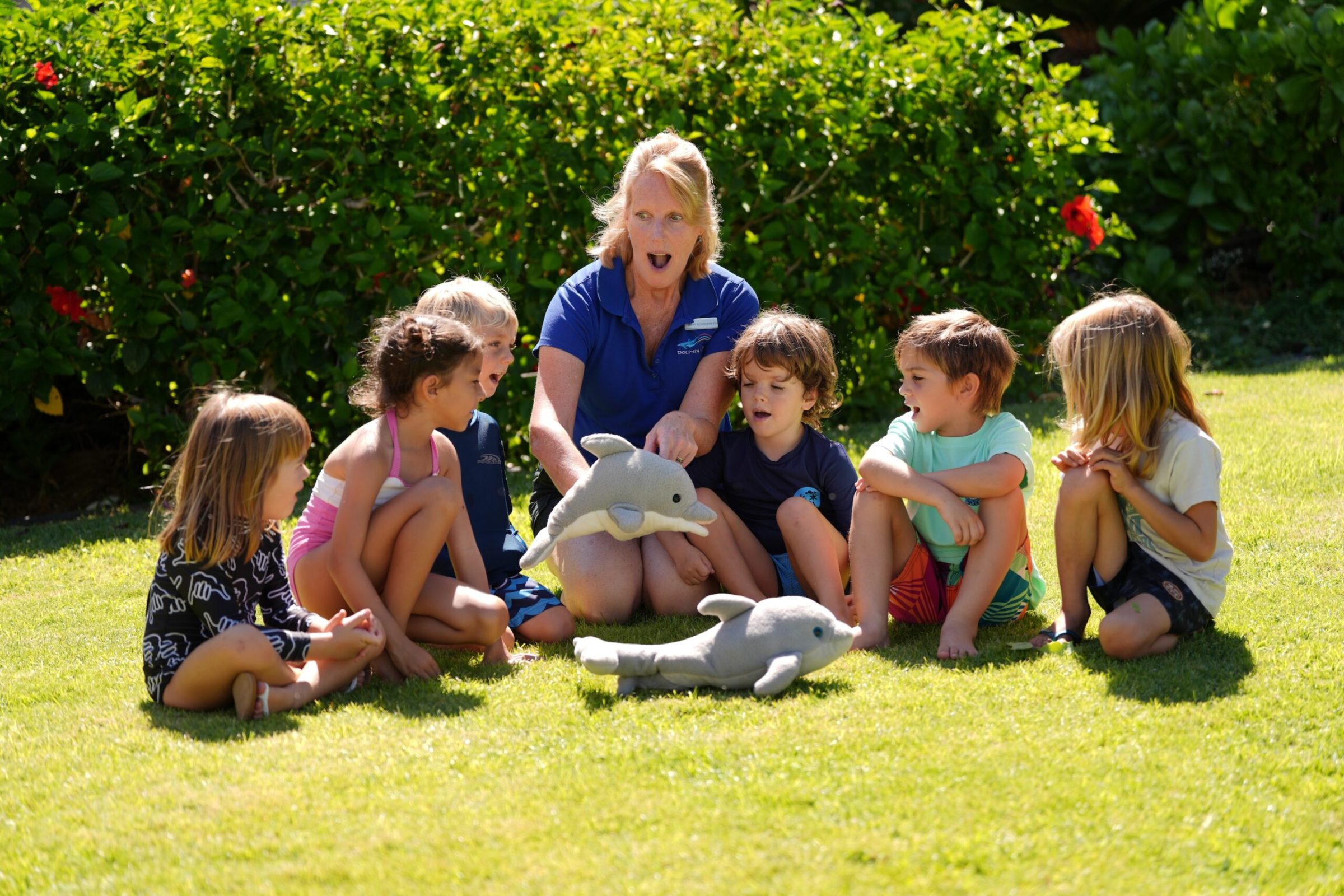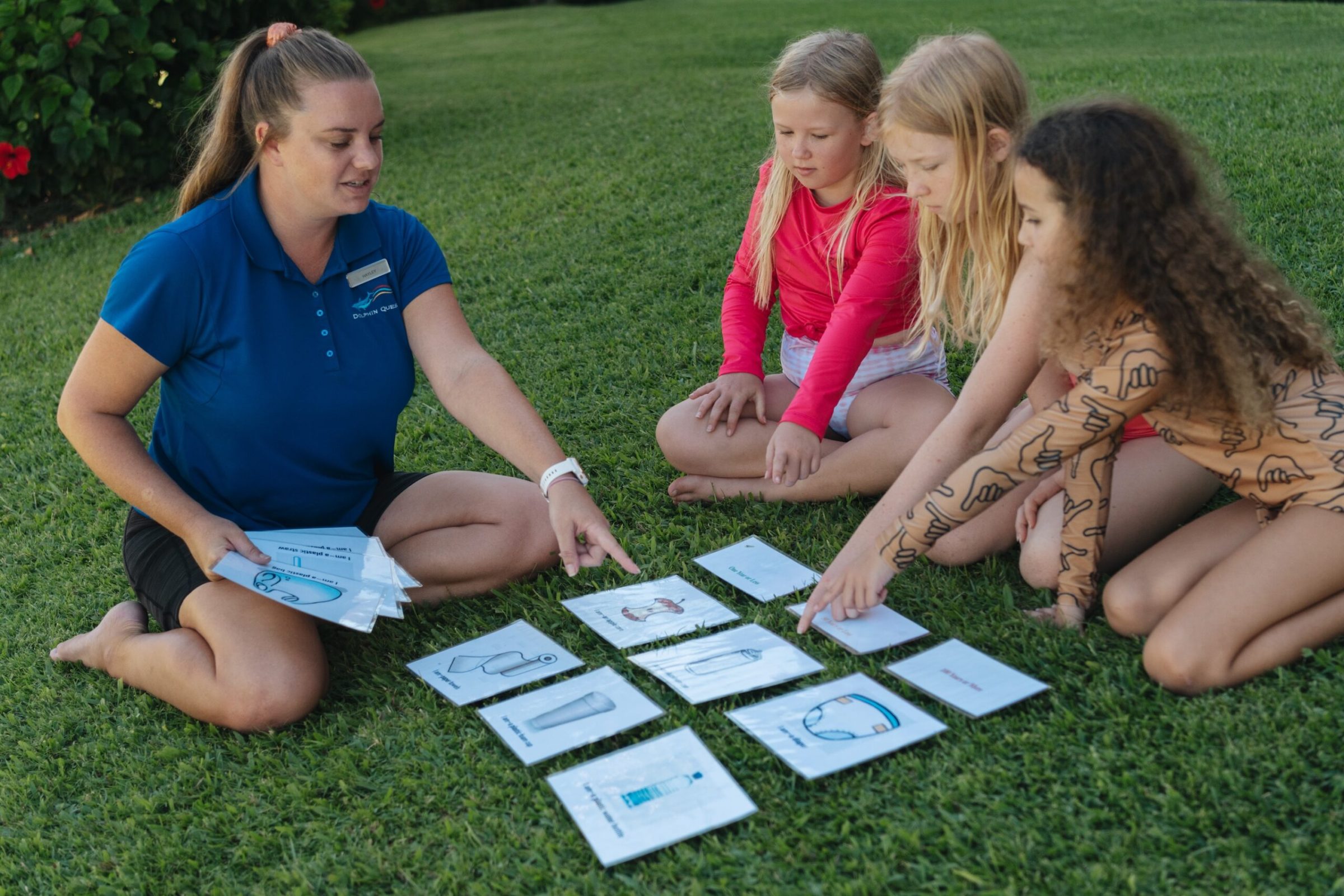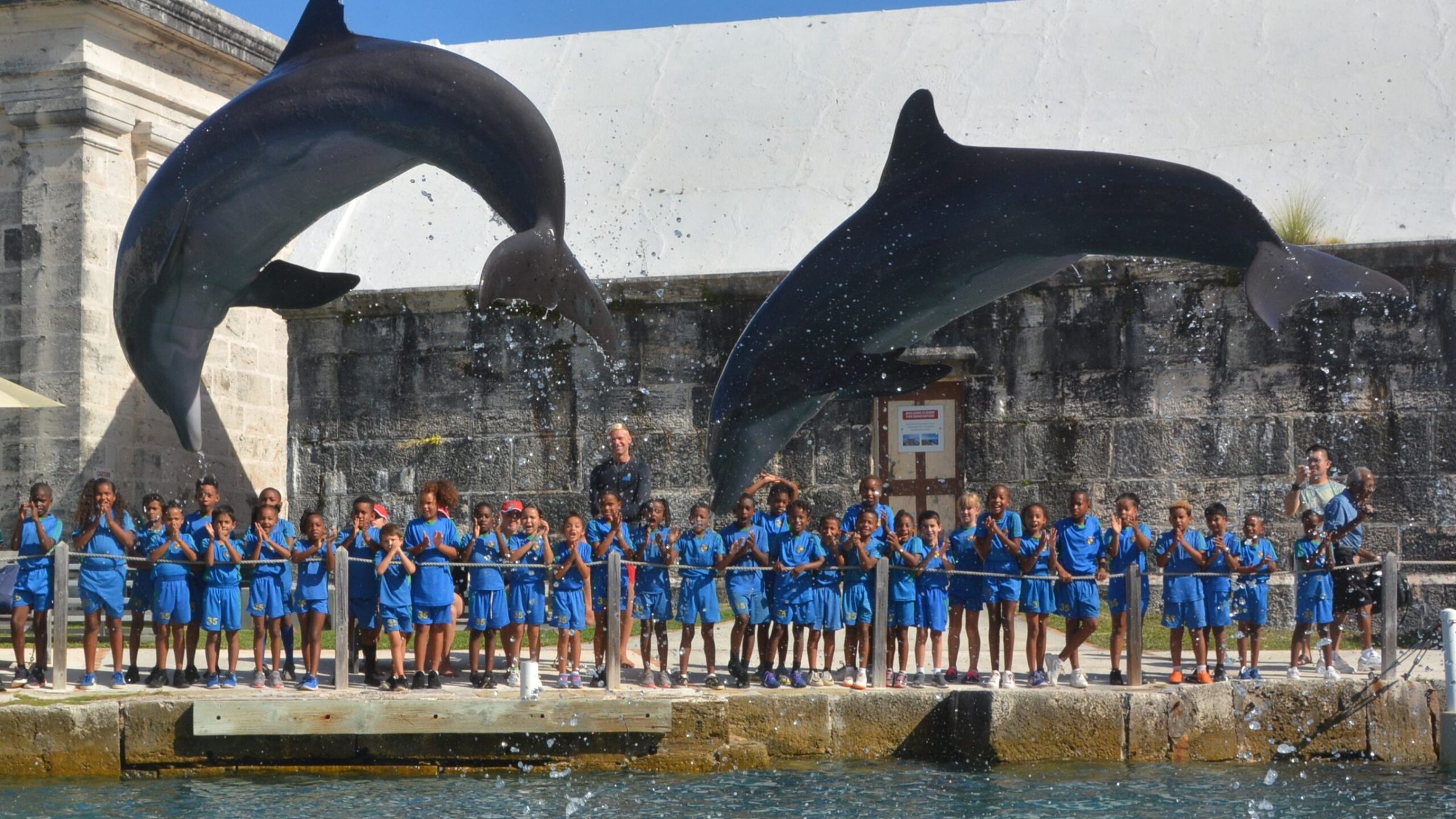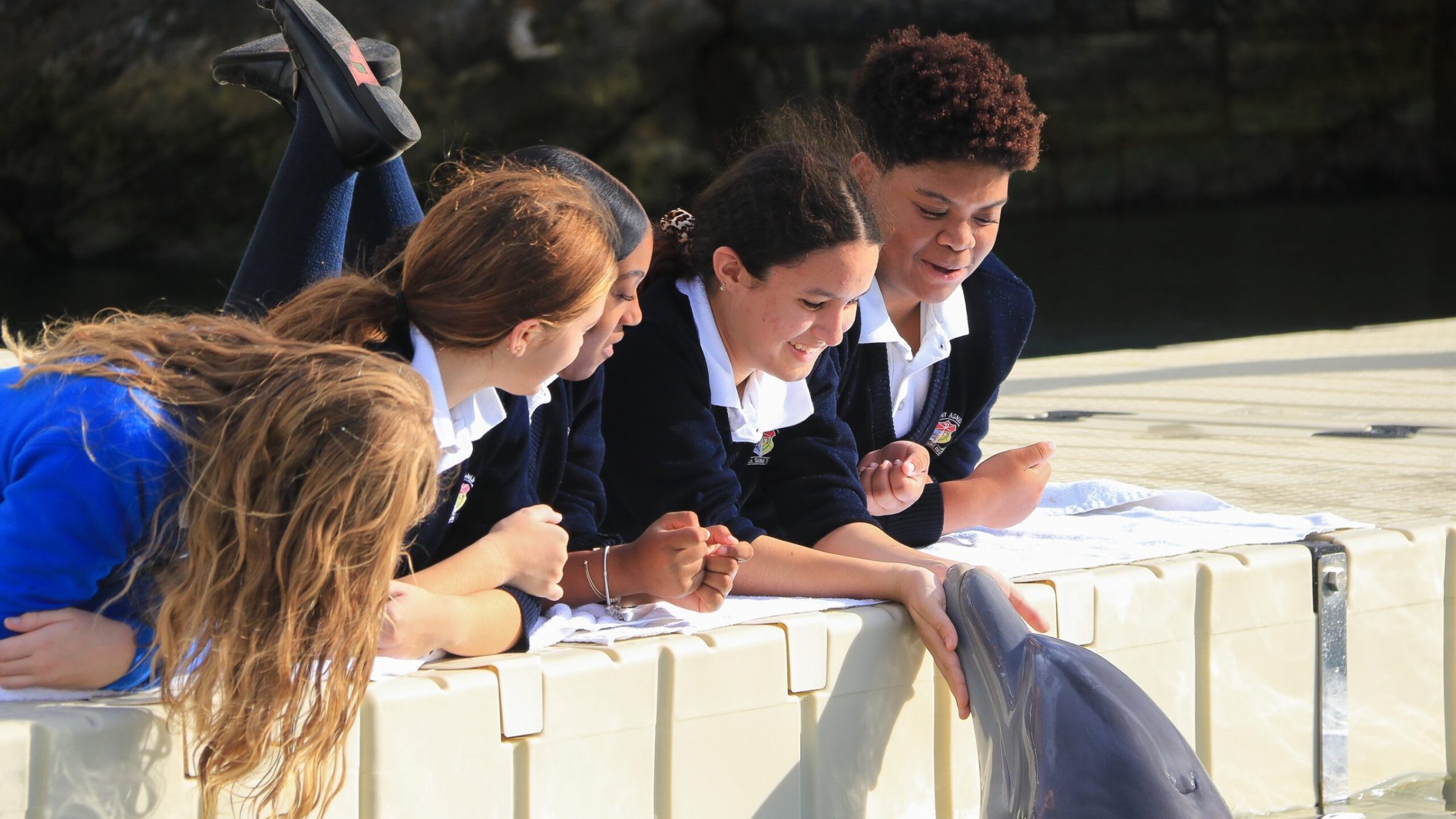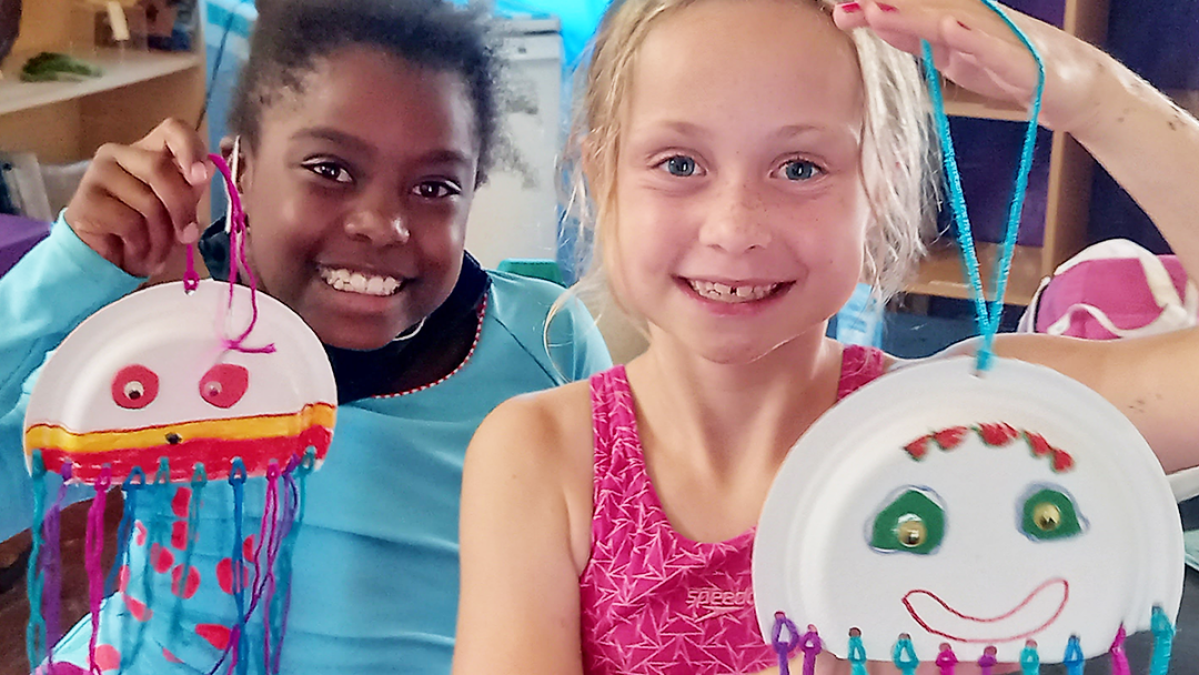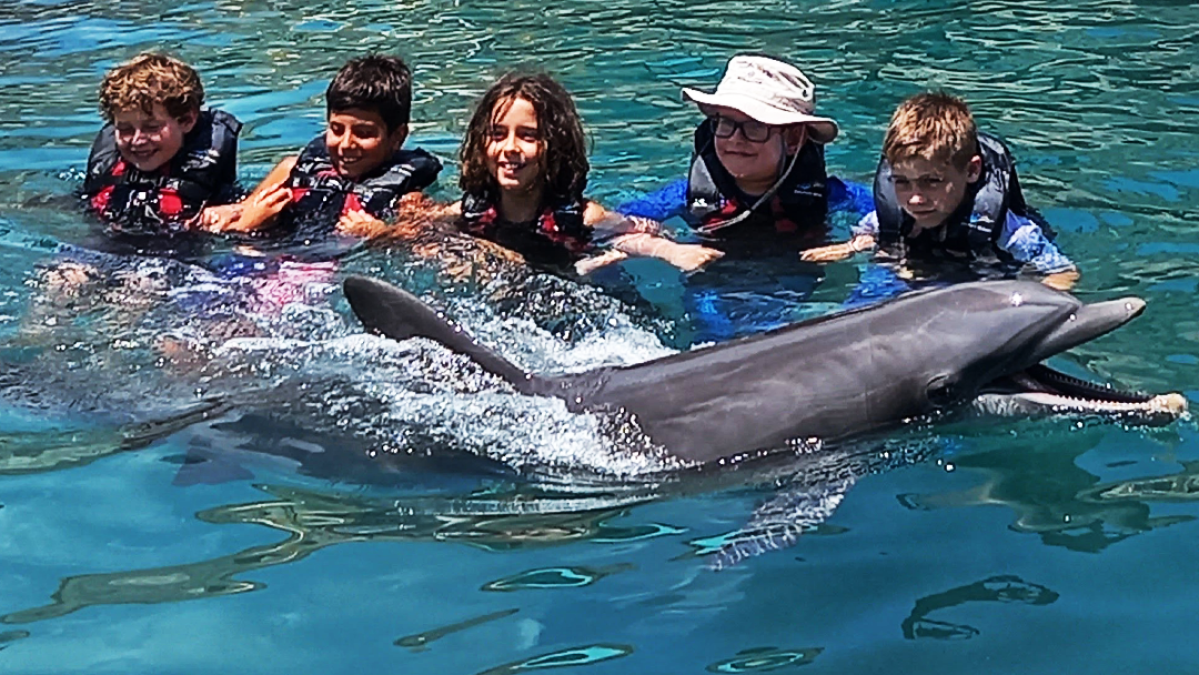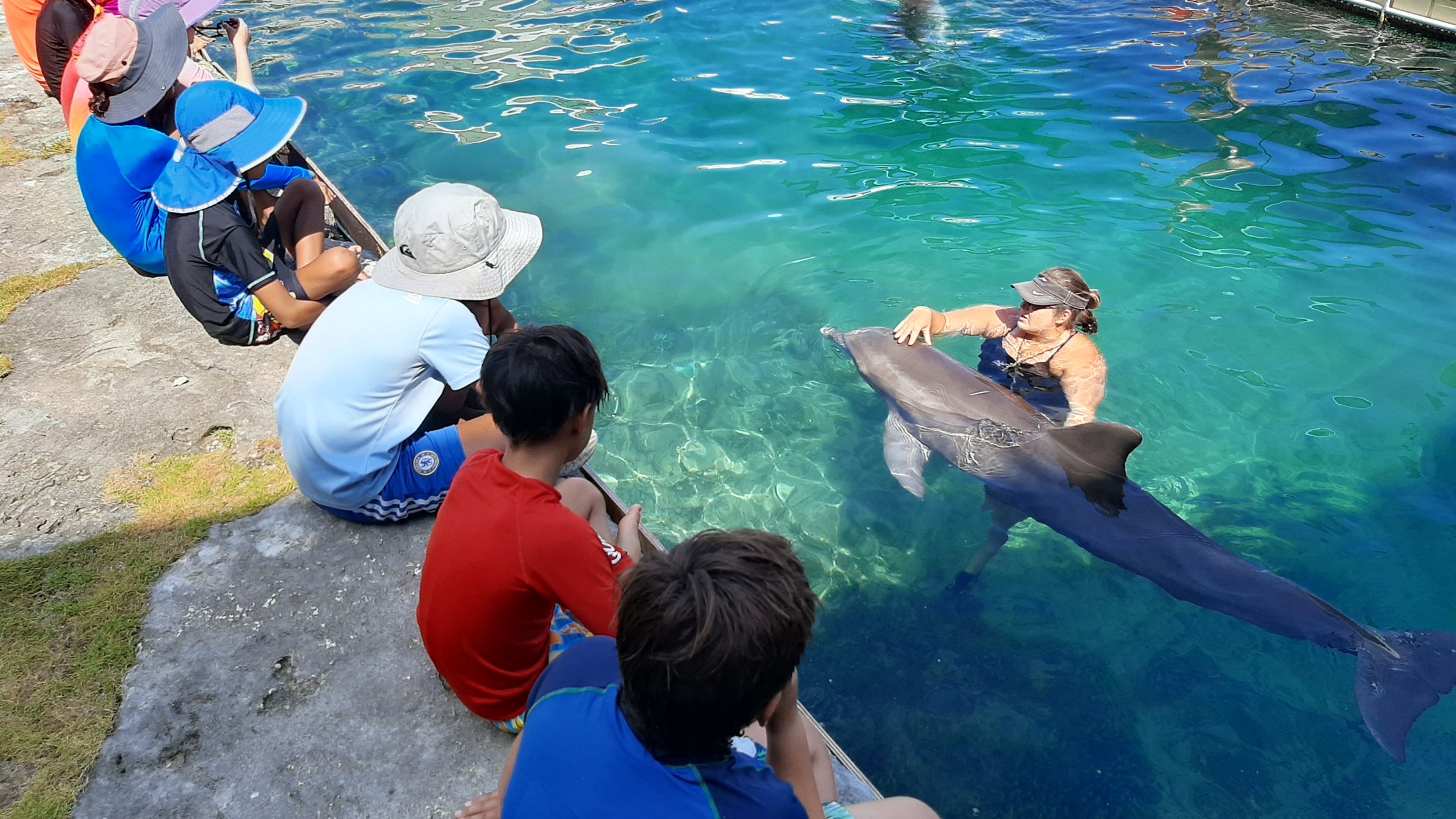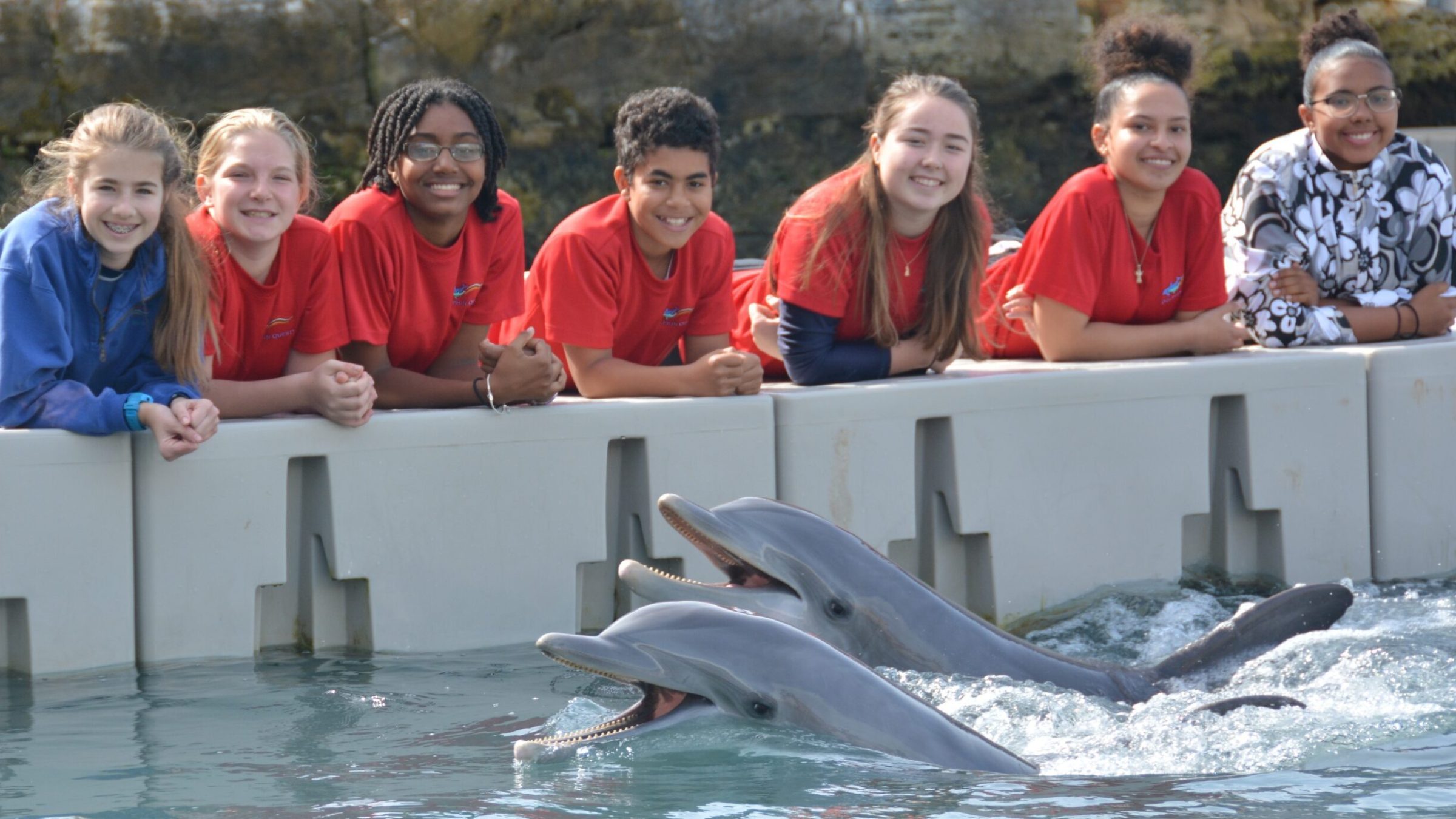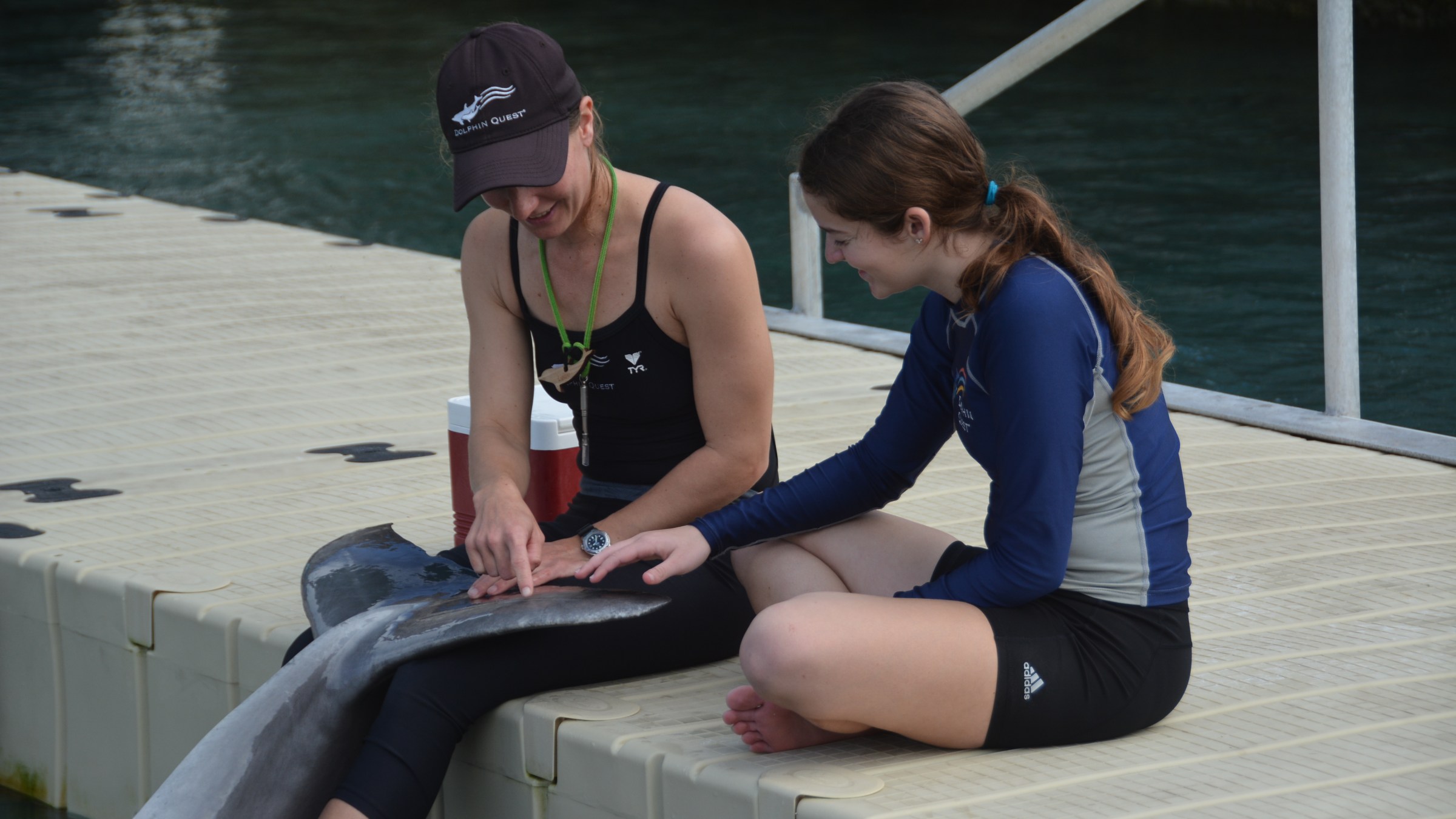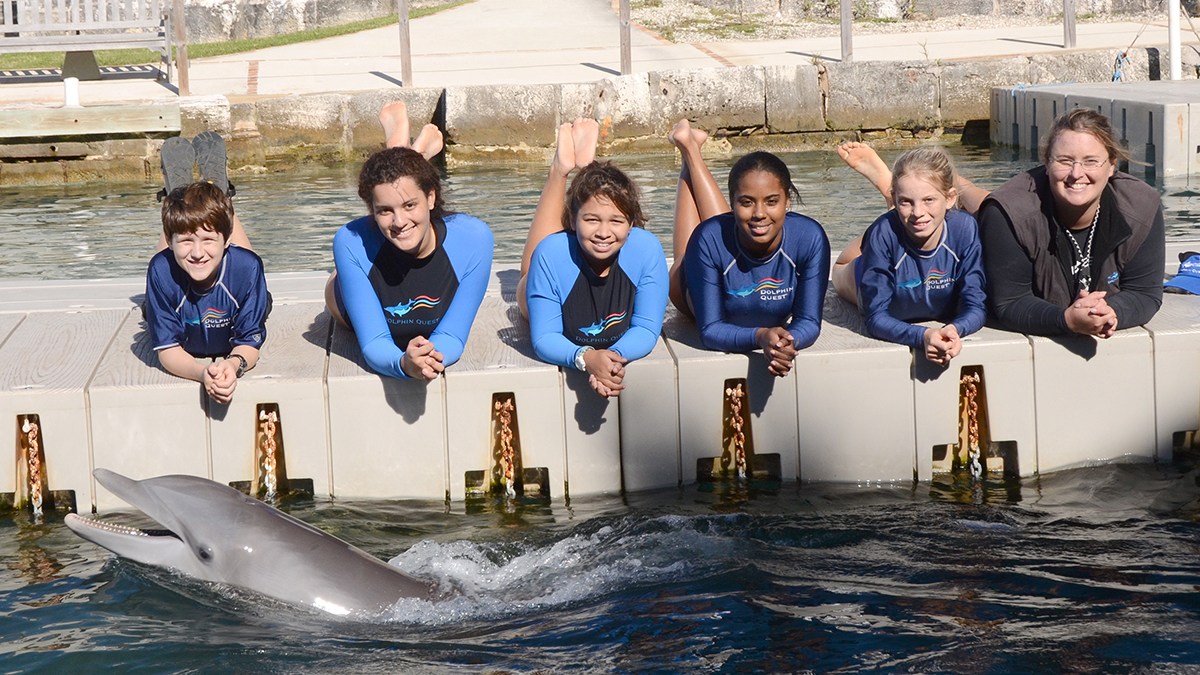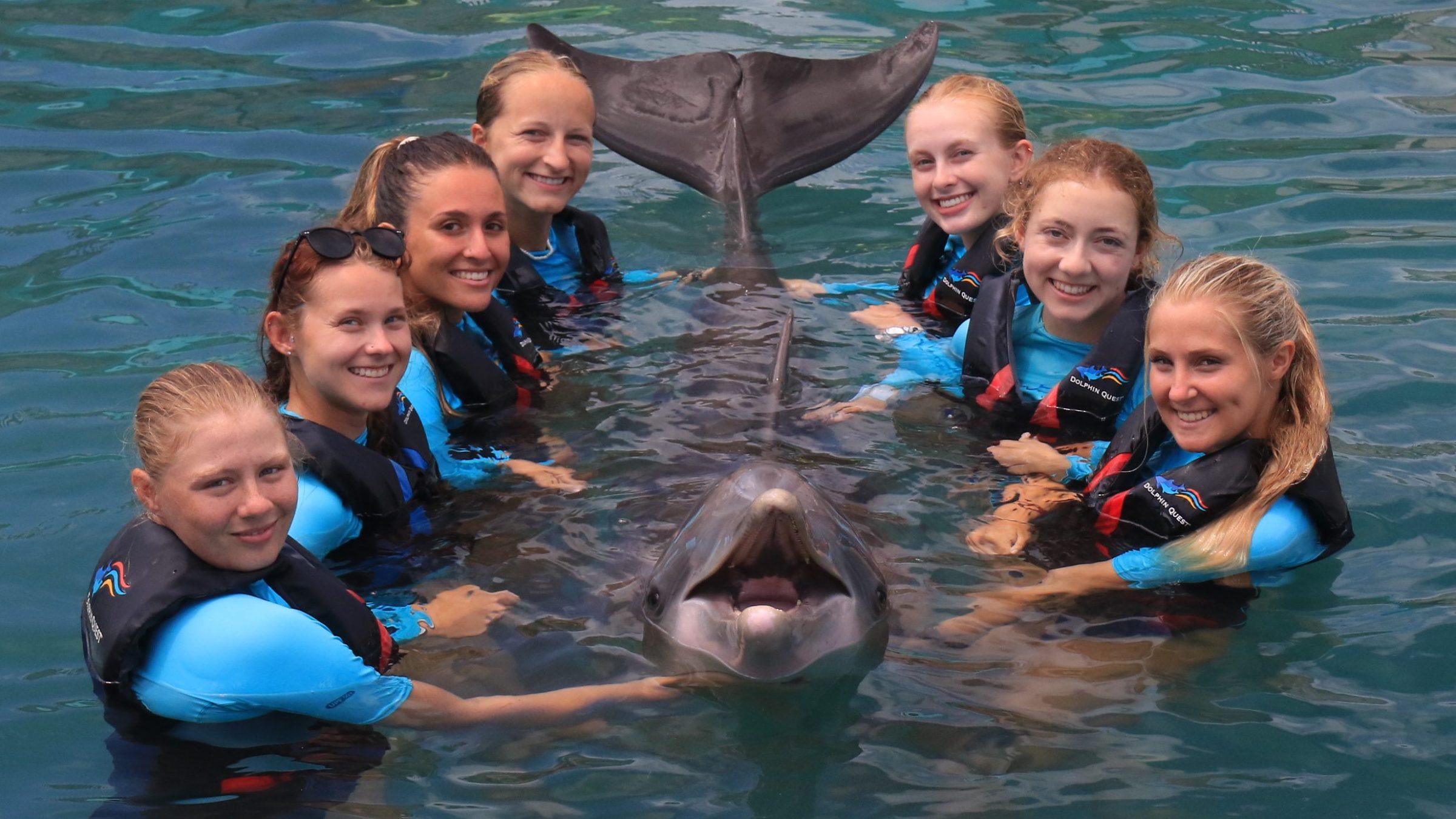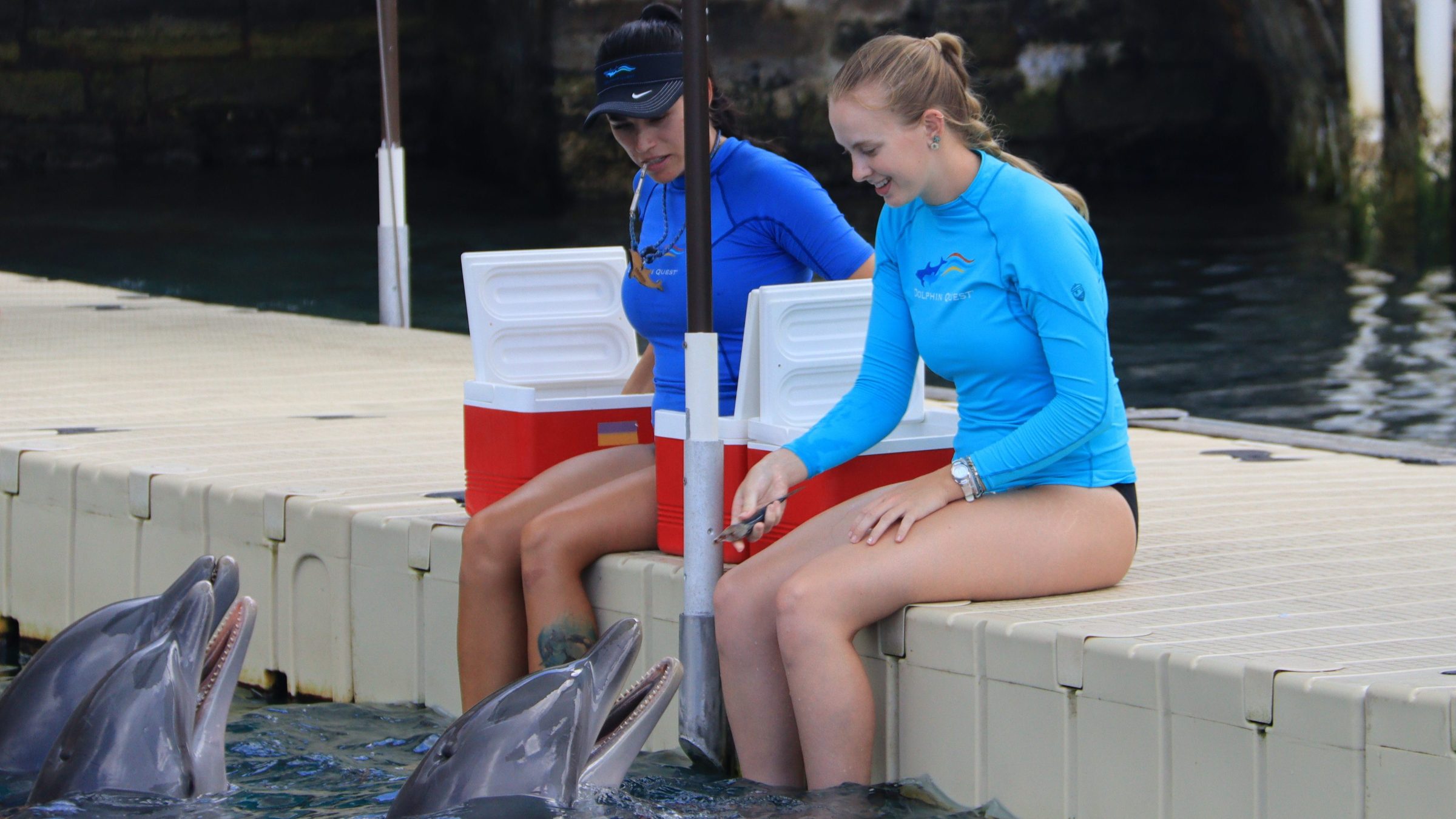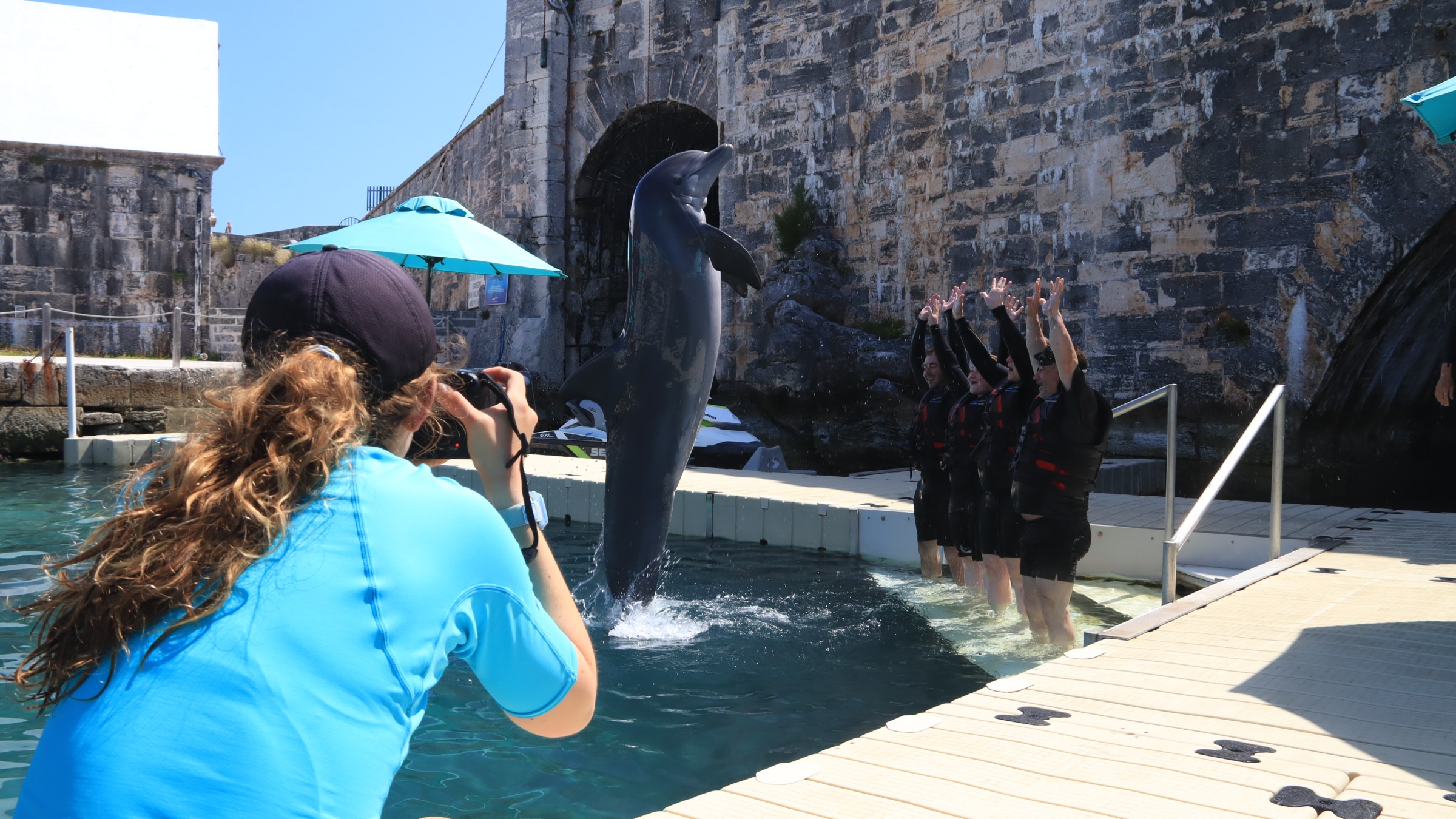DOLPHIN QUEST BERMUDA FIELD TRIP
Join us for an immersive field trip at Dolphin Quest Bermuda where the dolphins are your classmates. Embark on an exhilarating educational journey alongside your school or community group for grades preschool through college, exploring the marvels of dolphins and their habitat through a variety of engaging and thrilling activities. Secure your visit today for an unforgettable and enriching learning experience.
CUSTOMIZED EDUCATION PACKAGE
Bring your school class or group to Dolphin Quest Bermuda where we conduct an expanded and customized education program to accompany your curriculum and help educators meet current learning standards. This package includes six individual lessons and each one can be tailored to suit the specific needs of your students. This package provides teachers and students with an educational experience they will always remember.
DOLPHIN QUEST CAMP
Explore an exciting week-long camp at Dolphin Quest Bermuda, where students engage in diverse activities centered around marine animals and ocean conservation. Campers between the ages of 7-12 experience a broad scope of activities like swimming, games, arts and crafts, and interactive sessions with our dolphins while gaining insights into marine life, the ocean, and conservation efforts.
VISITING CAMP FIELD TRIP
Join a Dolphin Quest “Splash of Fun” field trip, designed for visiting camp groups seeking a highlight activity for their youth program. Your group will experience an age-appropriate conservation themed game, have a lagoon-side view of the dolphins, and learn more about these inspiring marine mammals from our knowledgeable Education team.
JUNIOR APPRENTICE PROGRAM
The Junior Apprentice Program offers an immersive learning opportunity tailored for students between the ages of 13 and 17 who are interested in pursuing careers in the marine mammal or conservation fields. Apprentices will be mentored by our Dolphin Quest Crew as they experience the many aspects of caring for marine animals. This exceptional program serves as an ideal preparatory experience for our college level internship program.
BERMUDA INTERNSHIP PROGRAM
Welcome to the Internship Program at Dolphin Quest Bermuda, an immersive journey into the world of marine conservation and animal care where college students can experience a dynamic marine education environment alongside seasoned experts. As an intern, you will engage in diverse activities, from animal care and enrichment to educational outreach, gaining insights into marine mammal behavior, conservation practices, and the vital role of education in fostering a deeper connection with our oceanic world.
DOLPHIN QUEST PARTY
Surprise your child with a birthday or graduation party they will always remember – a Dolphin Celebration Party! Join us at Dolphin Quest Bermuda for a unique and customizable party experience. Exclusive access to a private room makes your planning streamlined while year-round dockside activities and dolphin interaction options mean you can create a party package to suit your needs.

Teachers have access to a diverse array of resources provided by the Alliance of Marine Mammal Parks and Aquariums (AMMPA) for use within their classrooms.
AMMPA serves as the global authority and accrediting entity for marine parks, aquariums, zoos, and research facilities. Renowned for their excellence, Alliance-accredited institutions set the benchmark for superior care of marine mammals. Comprising knowledgeable animal experts with vast expertise, these facilities prioritize the welfare of their resident animals. Alliance-accredited members adhere to, and often surpass, stringent Standards & Guidelines that span over a dozen facets, including animal husbandry, training, water quality, environmental standards, education, scientific research, breeding protocols, and transportation procedures.
A wide variety of resources have been reviewed and compiled and made available to educators interested in teaching their students about marine life and conservation.
CLICK ON ANY OF THE BELOW LINKS TO REVIEW THESE TEACHER RESOURCES:
